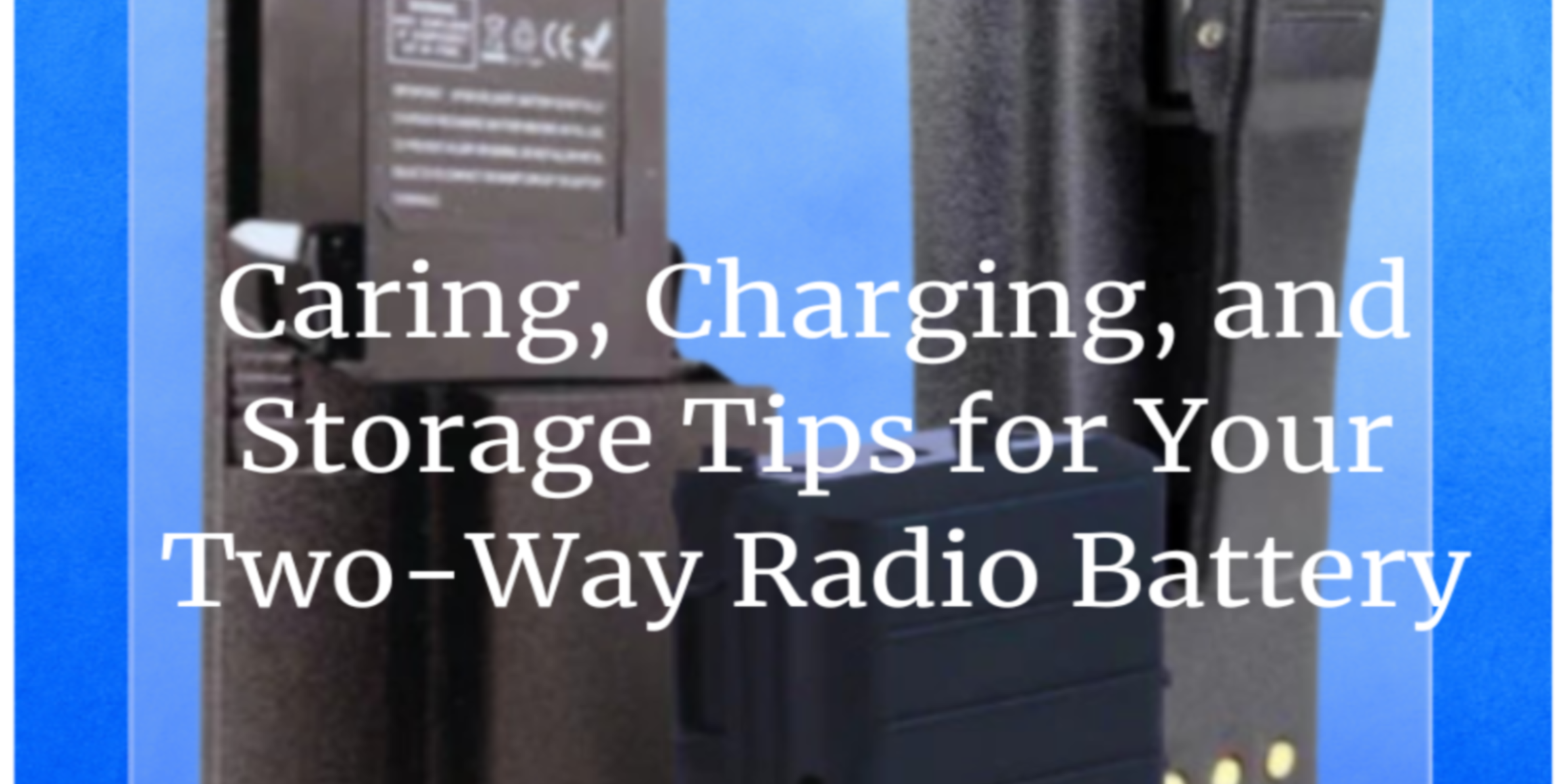Two-way radios are your lifeline and having a well-performing battery means your radio is powered when you need it most. Batteries need special care to keep them lasting longer and performing better. Whether it's storing, charging, or operating your battery, proper care must be taken.
By following these suggested tips you can help protect your rechargeable two-way radio batteries and enhance their performance and life span over time.
Caring for Your Two-Way Radio Battery
On average, two-way radio batteries typically last around 18-24 months. This depends on how you use and care for your battery. Different battery chemistries are also dependent on how long your radio battery is expected to last.
Follow these simple steps below to extend the life of your two-way radio battery
Charge your new battery overnight before using it.
This is referred to as initializing and allows you to obtain the highest battery capacity. For optimal performance, Motorola recommends charging a new battery for 14 to 16 hours before initial use.
Only charge a battery when it needs it.
If the radio battery is not fully discharged, do not recharge it. We recommend carrying a spare battery or using our high-capacity lithium-polymer batteries when you require extensive talk times. (Up to 20 hours).
This can also help eliminate memory effect in Nickel Cadmium (Ni-CD) batteries meaning if you repeatedly recharge before fully depleting the battery it will "remember" that lower charge level and lose the ability to hold a full charge. This mostly effect Ni-CD batteries while you don't often see this in Lithium based batteries.
Use a conditioning charger.
Battery analyzers and conditioning chargers show you how much battery life you have, telling you when it's time to buy new ones. Conditioning chargers recondition the battery back to its normal capacity, ultimately extending its life. Motorola IMPRES chargers are often used to improve battery chemistry.
Charging Tips for Two-Way Radio Batteries
Use Correct Charger
Always use a charger that is compatible with your radio model and its battery chemistry. For example, you should not charge a lithium battery in a Ni-MH charger as this can be potentially dangerous as the charger won't regulate the voltage and current, leading to overcharging, overheating, and even causing a fire.
Use a dedicated charger that is designed to charge your battery chemistry. Some chargers can be tri-chemistry meaning they can charge both nickel and lithium batteries.
Turn Off Radio
It is recommended to turn your two-way radio battery off while it's on the charger.
Don't Overcharge
Do not leave your battery on the charger after it has been fully charged. This can significantly affect the life of your battery.
Clean Contacts Regularly
Chargers can collect dust and debris which can affect how it connects with the radio. Wipe the charging contacts with a clean dry cloth regularly.
Charge at Room Temperature
If the battery is too hot or too cold, bring it to room temperature before placing it on the charger.
Storing Your Two-Way Radio Battery When Not in Use
Storing your two-way radio battery for long periods require certain maintenance or you could risk your battery going into a 0 voltage state making it harder to revive.
When storing your two-way radio battery follow these steps to keep your battery chemistry from fading and ready for when you need to use it again.
Store batteries in a cool, dry environment.
When you're not using your battery on a radio, store it at room temperature and in low humidity. Your typical air-conditioned office is ideal. A cooler/ cold environment (5C-15C) is better for long-term storage but not essential.
Batteries stored in these locations have a shelf life of up to 2 years depending on the battery chemistry.
Do not freeze a battery
Store your batteries in conditions below 32F. If a battery is frozen, allow it to warm above 41F before charging.
Store batteries in a partially discharged state (40%).
Batteries from Waveband Communications will be partially discharged to about 40% when received. If a battery is in storage for more than 6 months, it should be cycled and partially discharged, then returned to storage.
A battery that has been in storage will need to be fully recharged
The battery may need to have several charge/ discharge cycles before it provides the expected shift life. NiCd and NiMH batteries may exhibit very low capacity until cycled a few times.
Avoid Hot Temperatures
Do not leave the radio/battery in a parked car (or trunk) for an extended period. Do not charge the battery in a hot environment. Avoid excessively dusty or wet conditions when possible.
If you follow the steps above, your battery will be ready to use when it's time to come out of storage. Store in the proper conditions and temperatures to help prevent chemistry fade.
This article was last updated on January 2025.
.png?width=800&name=Waveband%20Communications%20Inc.%20(1).png)



1 comment
Diego
hello,
First thank you for the great information. At my FD we charge batteries during 24hours, and use them for 24 hours. Batteries get charged in the charging station (6 slots).
Is this the best way to charge the batteries? Or do you recommend something different?
thank you,
Diego